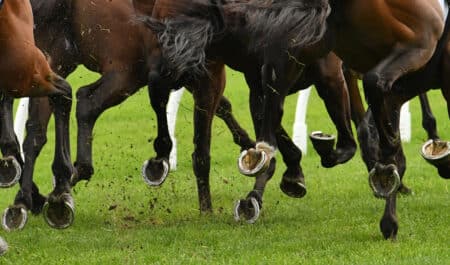Scientists at Kentucky Equine Research recorded horses eating overnight to determine when and how much hay is consumed.
A leading cause of lameness in young Thoroughbred racehorses is now being caught earlier; could improve racetrack safety and decrease breakdowns.
A working group is looking at identifying horses at risk, genetic markers, and postmortem protocols in exercise-associated sudden death.
Trainers have many more tools available to aid them in their decisions to best prepare and position their horses for success.
Questions as to whether the genetic structure of the population has become compromised can now be addressed with powerful genomic tools.
It's 'all hands on deck' at the Goehring Research Lab where early detection, transmission and vaccine efficacy are being explored.
Scientific evidence of welfare assessment of racehorses is lacking; researchers are attempting to develop a practical assessment protocol.
Research has found that equine tapeworms, a common cause of colic in horses, are becoming increasingly resistant to deworming products.
Researchers set out to find an easier way to check the consistency and safety of racetrack dirt and turf surfaces to reduce injury risk.
The report, published in the January edition of Equine Disease Quarterly, looks at information gathered in North America and Europe.
This common bacterial or fungal infection that affects the frogs of the horse's feet can be treated, but prevention is key.
This highly-contagious infection affecting susceptible foals can be hard to control during an outbreak; researchers are developing new vaccines.
Equine Herpesvirus 1 does everything it can to circumvent and trick the immune response, making better vaccines difficult to produce.
Helping foals survive and thrive who have lost or been rejected by their dams, from birth to four months of age.
Some of the newer lameness detection systems and imaging tools provide early diagnosis, especially beneficial to horses that perform at speed.















